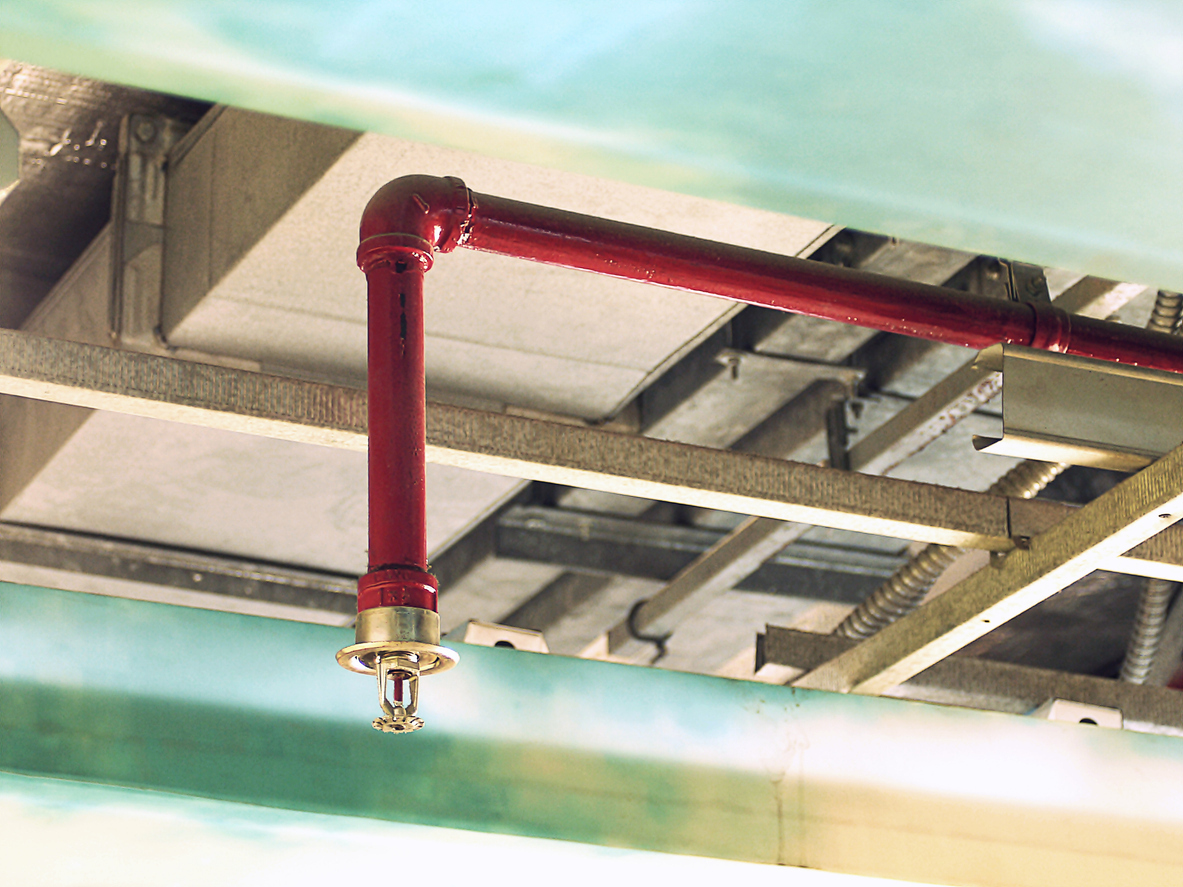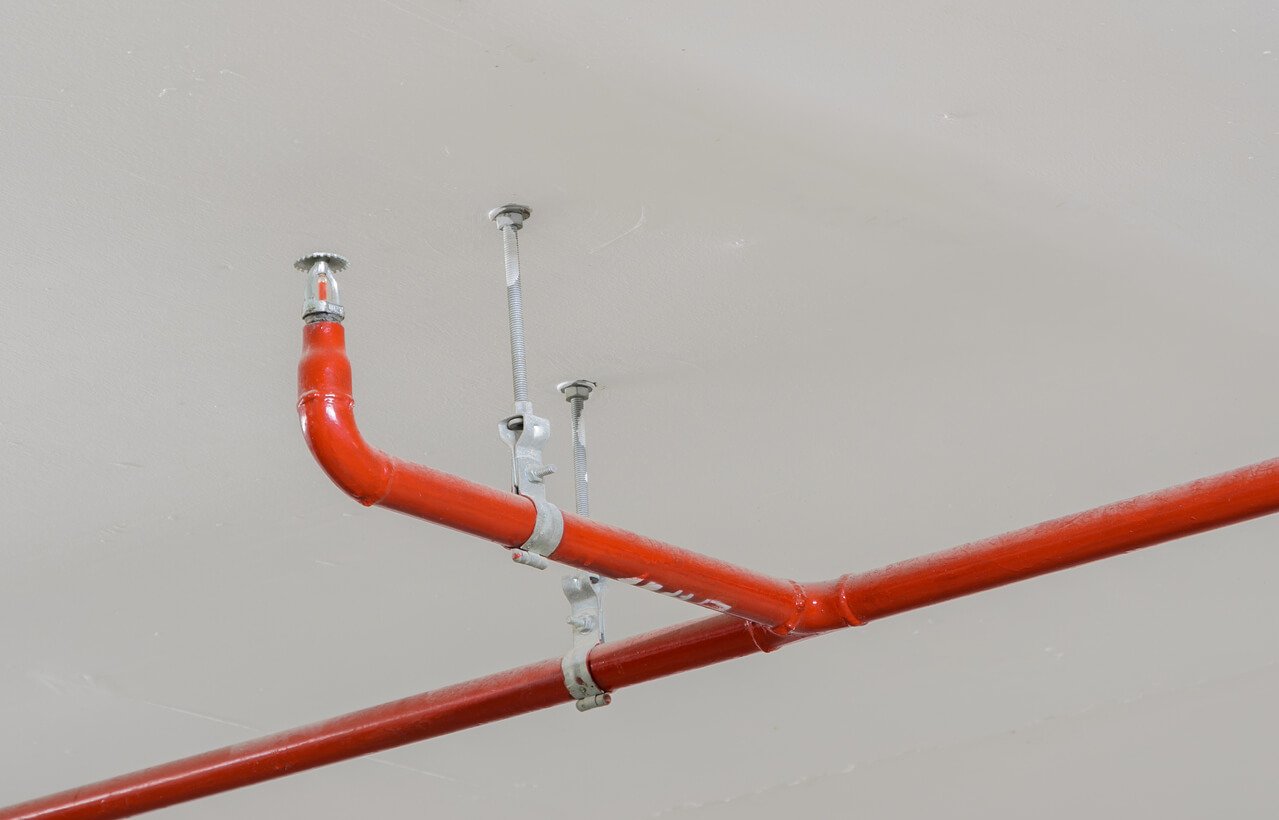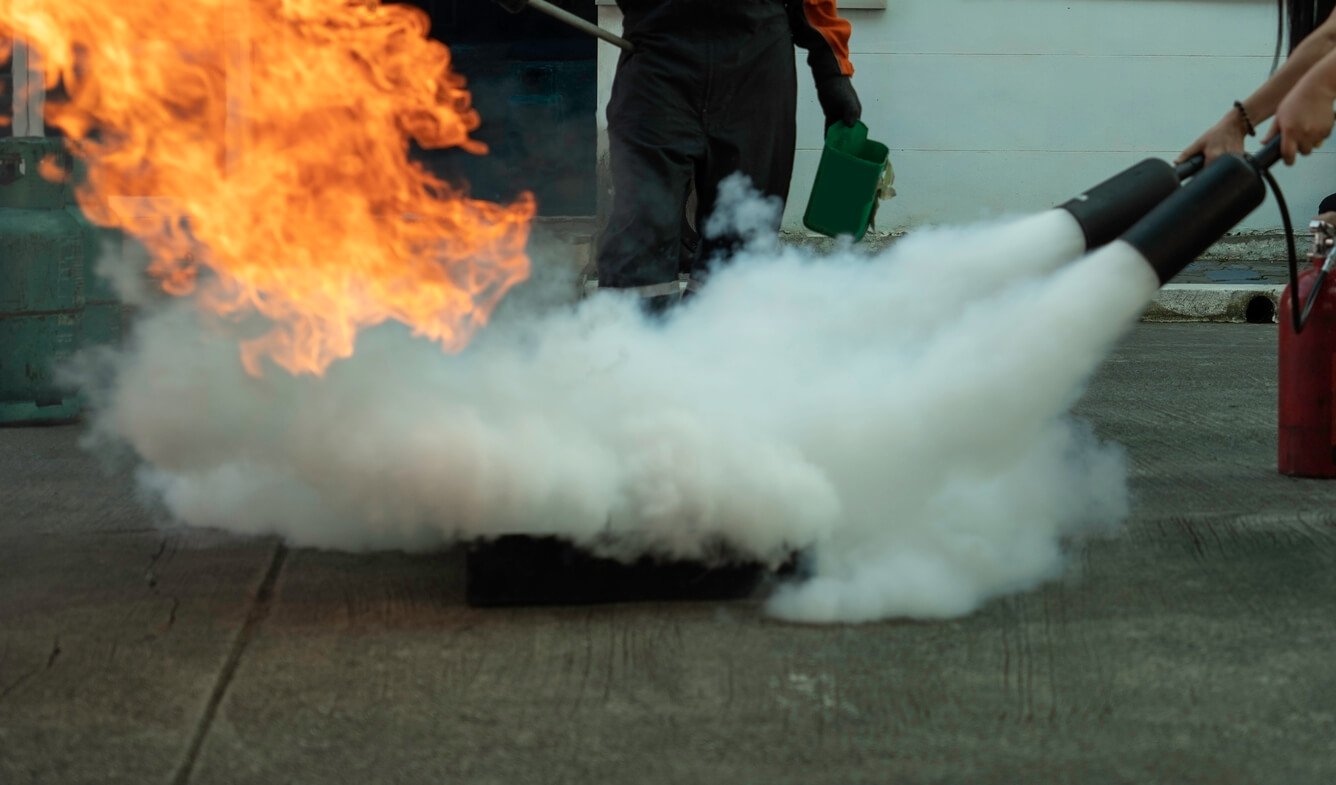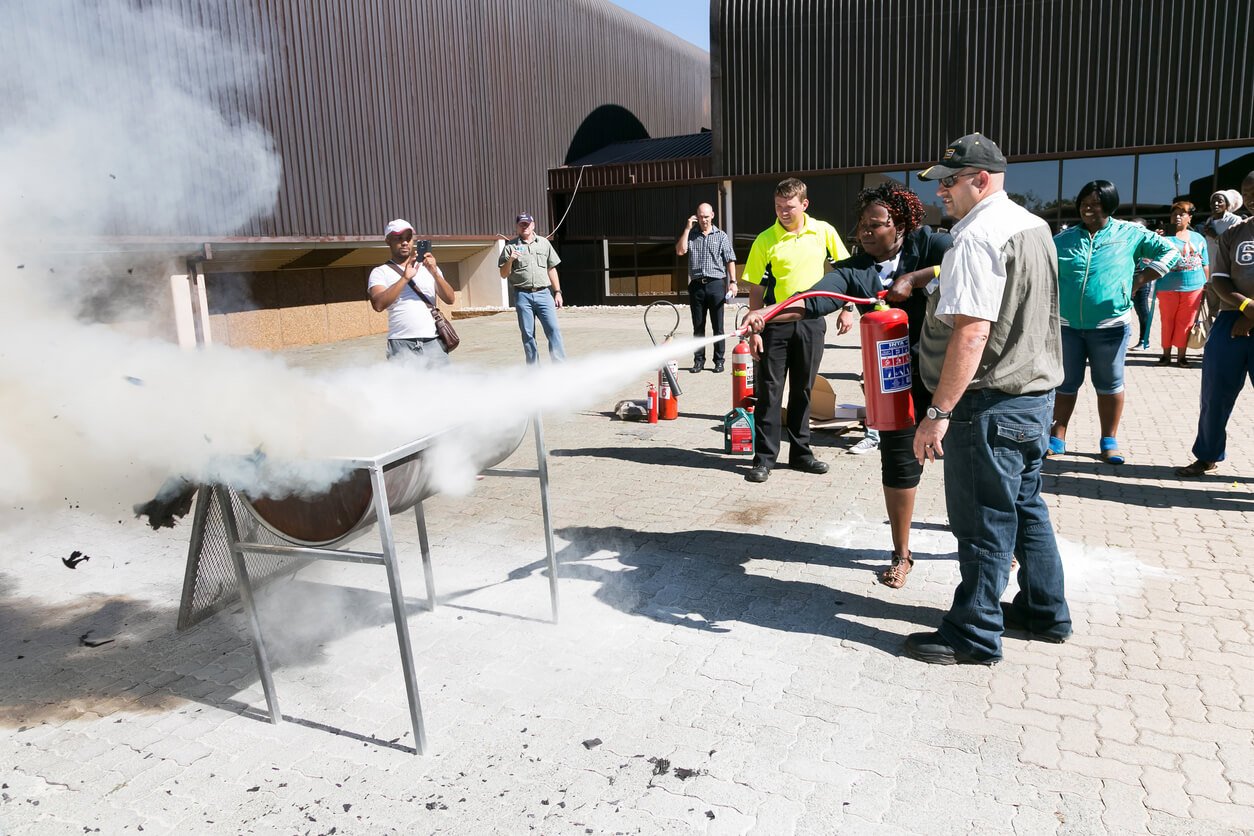Schools Excel at Fire Containment Through Proper Testing
In 75% of school building fires, the fire spread is effectively contained to the object of origin, preventing widespread damage and potential loss of life. This impressive containment success rate directly correlates with properly functioning fire suppression systems and adherence to routine testing requirements, demonstrating that schools' commitment to regular fire suppression testing delivers measurable safety results.
Fire suppression testing is a responsibility schools take very seriously—and most are quite good at it.
In 75 percent of school building fires, the fire spread is effectively contained to the object of origin, preventing more widespread damage and potential loss of life. This success rate directly correlates with properly functioning fire suppression systems and adherence to routine testing requirements.
Additionally, 66% of all school fires had a smoke alarm present, helping mitigate damage.
Why is this important?
For maintenance professionals overseeing educational facilities, it highlights the critical role that well-maintained detection and suppression systems play in protecting students, staff, and property.
Key Takeaways
- Establish structured inspection schedules that address weekly, monthly, quarterly, and annual testing requirements to catch problems before they escalate into system failures.
- Monitor water pressure consistently across multiple system points, as inadequate pressure prevents proper sprinkler operation and represents the most critical factor in fire suppression system effectiveness.
- Maintain comprehensive documentation for at least one year after the next required test, including inspection dates, results, deficiencies, and corrective actions to ensure regulatory compliance and insurance coverage.
- Address environmental challenges proactively by protecting systems from physical damage, clearing obstructions from sprinkler heads, and implementing enhanced monitoring in humid areas prone to accelerated corrosion.
- Partner with certified fire protection professionals who understand educational facility requirements and can provide integrated testing services while maintaining backup documentation for compliance audits.
Types of Fire Suppression System Components Most Common in Schools
Educational facilities typically incorporate multiple fire suppression system components working together to provide comprehensive protection.
Fire Sprinkler Systems
These wet pipe systems use strategically placed sprinkler heads connected to pressurized water supply lines. The system activates when individual sprinkler heads detect sufficient heat, releasing water directly over the fire source.
Maintenance professionals must regularly test water pressure levels, inspect sprinkler heads for physical damage, and verify proper operation of control valves throughout the piping network.
Fire Alarm Systems
A fire alarm provides early detection and notification capabilities essential for educational environments.
These systems integrate smoke detectors, heat sensors, manual pull stations, and audible/visual notification devices. Control panels monitor system status and provide detailed information about alarm conditions, trouble signals, and system activation.
Regular testing ensures proper functioning of all system components and communication pathways.
Fire Extinguisher Systems
Fire extinguishers serve as the first line of defense for small fires before sprinkler system activation. Schools typically maintain Class A extinguishers for ordinary combustibles, Class B for flammable liquids in laboratories, and Class C for electrical equipment fires.
Fire extinguishers must be inspected monthly to maintain compliance with fire protection standards. Proper placement, accessibility, and pressure gauge readings require consistent monitoring by trained maintenance personnel.
Kitchen Fire Suppression Systems
NFPA 96 requires that commercial kitchens have a fire suppression system in place, such as a hood and duct protection system or a manual fire extinguisher. These wet chemical systems specifically address grease fires common in school cafeterias and culinary programs. The systems include specialized suppression agents, activation mechanisms, and fuel shut-off capabilities designed for cooking equipment protection.
Emergency Lighting Systems
These devices ensure safe evacuation during fire emergencies when primary power systems fail. Emergency lights will automatically activate during power outages and provide illumination for exit routes and emergency signage. Testing protocols verify battery charge levels, lamp functionality, and automatic transfer capabilities during simulated power failures.
Fire Suppression System Inspection Protocols for Schools
Fire suppression testing requires structured protocols that address each system component's unique requirements and testing frequencies.
Regular inspections catch problems before they escalate into system failures.
Visual Inspection
Visual inspections form the foundation of fire suppression testing.
These checks identify obvious problems without requiring system activation or complex testing procedures, such as:
- Fire sprinkler components require visual assessment for corrosion, physical damage, and proper positioning.
- Fire extinguishers must be inspected monthly and exit lights tested monthly according to National Fire Protection Association (NFPA) requirements.
- Sprinkler heads should show no signs of paint, corrosion, or physical damage that could prevent proper operation.
- Control valves must remain in their correct positions and show clear tamper indicators.
- Fire alarm system components need visual verification of detector cleanliness, proper mounting, and undamaged notification devices.
- Control panels should display normal operating status with no trouble indicators.
- Manual pull stations require inspection for accessibility and freedom from obstruction.
Physical Inspection
Physical inspections go beyond visual checks to test the mechanical operation and functionality of fire suppression components.
An important thing to check is water pressure. On-site fire protection personnel conduct monthly inspections that involve checking pipe system gauges to ensure proper pressure maintenance and examining alarm valves for correct operation. These pressure readings must match design specifications and remain consistent across multiple monitoring points to guarantee adequate water delivery during emergencies.
Fire extinguishers require similar attention to pressure levels, with monthly verification ensuring proper charge levels that enable effective fire suppression. The inspection process includes checking tamper seals for integrity and confirming that mounting brackets hold extinguishers securely in place.
Hose assemblies also need careful examination to verify proper attachment and freedom from damage that could prevent deployment during an emergency.
Weekly Inspections
For fire pump systems, a weekly no-flow test is required to ensure the pump starts automatically and operates as intended. These brief tests verify pump readiness without full system activation.
Fire alarm systems require weekly testing through activation of different manual call points on a rotating basis. This process ensures proper signal transmission to the control panel and confirms notification device operation throughout the facility.
Monthly Inspections
The when, why, what, and how of fire suppression system testing is carefully outlined in NFPA codes and any local jurisdiction.
You’ll need to check a few things monthly:
- Gauge readings and valve position for water-based fire suppression systems
- Sprinkler head evaluation for damage or obstruction for wet pipe systems
- Air pressure levels and valve enclosures for dry pipe systems
- Battery backup and lamp functionality for emergency lighting systems
Testing should simulate power failure conditions and confirm automatic activation within required timeframes.
Quarterly Inspections
Mechanical water flow alarm devices should be tested quarterly. However, you can stick to semi-annual inspections if you have vane-type or pressure switch-type alarm devices.
Fire pump systems require quarterly comprehensive testing, including flow tests and performance verification. These tests ensure pumps can deliver the required pressure and volume under emergency conditions.
Annual Inspections
NFPA 25 requires annual inspections for all water-based fire protection systems, with more frequent examinations required for specific components or under particular conditions, including those present in corrosive environments.
Annual inspections provide comprehensive system evaluation, including internal pipe inspection, full flow testing, and complete system performance verification. Because of their complexity, annual fire sprinkler inspections should only be performed by licensed sprinkler contractors.
Fire extinguisher systems require annual maintenance by certified technicians who verify internal components, recharge units as needed, and conduct hydrostatic testing on a scheduled basis. Kitchen fire suppression systems need annual inspection of wet chemical agents, activation mechanisms, and fuel shut-off devices.
Identifying Common Fire System Issues in Educational Environments
Educational facilities face unique challenges that can compromise fire suppression system effectiveness. Understanding these common problems helps maintenance professionals address issues before they lead to system failures.
Water Pressure Problems
Maintaining the right amount of water pressure in your suppression system is vital to its proper function. To emphasize, water pressure is 100% vital to how the system functions and the intention of its original design. Schools often experience pressure fluctuations due to high water demand from cafeterias, laboratories, and maintenance activities.
Inadequate water pressure prevents sprinkler heads from achieving proper spray patterns and coverage areas. Low pressure can result from closed control valves, system leaks, or an insufficient municipal water supply. Less apparent issues, such as air pockets in the suction pipe, can result in diminished pressure, hindering the efficiency of the pump.
Regular pressure monitoring at multiple system points helps identify developing problems. Fire pumps may require suction line inspection to eliminate air pockets that reduce system efficiency.
Physical Damage and Obstruction
School environments present numerous opportunities for fire system damage.
Students and staff can accidentally damage sprinkler heads during routine activities or facility maintenance.
Classroom decorations pose frequent obstruction problems. Hanging materials can block sprinkler head spray patterns or interfere with smoke detector operation.
Storage items improperly placed near fire extinguishers can prevent access during emergencies.
Maintenance personnel should regularly verify that sprinkler heads maintain proper clearance from decorations and stored materials. Fire extinguisher accessibility requires monthly verification to ensure unobstructed access.
Control System Malfunctions
Fire alarm control panels in schools frequently experience trouble conditions due to environmental factors or system wear. Fire alarm systems have various parts, like detectors, alarms, and control panels, which can lose their effectiveness over time due to dust, wear, or other issues.
Smoke detectors accumulate dust and debris in educational environments, leading to false alarms or reduced sensitivity. Heat detectors may drift from calibrated activation temperatures over time. Manual pull stations can experience mechanical wear from frequent testing or accidental activation.
Control valve position problems represent another common issue. It is not uncommon to find a valve in the wrong position during routine maintenance and inspection. This will definitely impair the fire suppression pump's ability to function in an emergency if left unchecked.
Corrosion and System Aging
Older school buildings often contain aging fire suppression systems that require enhanced monitoring for corrosion-related problems.
Corrosion with water-based fire suppression systems is not a new problem. As time progresses, so does the corrosion of metal exposed to oxygen.
Metal piping systems in humid environments like school kitchens, swimming pools, and shower facilities face accelerated corrosion rates. Sprinkler heads in these environments may require more frequent replacement or specialized corrosion-resistant models.
Fire pump systems using diesel engines require regular maintenance to prevent corrosion from contaminated fuel or low coolant levels. Regular oil changes and coolant level monitoring prevent engine damage that could render pumps inoperative during emergencies.
Maintaining NFPA Compliance for Schools
NFPA standards require specific record-keeping practices—including what you document and how long you have to keep it—that demonstrate ongoing system maintenance and regulatory compliance.
Most professionals use fire log books to document their compliance efforts. These records become critical during authority having jurisdiction inspections, insurance evaluations, and compliance audits.
Essential documentation includes:
- Inspection dates
- Testing results
- Maintenance performed
- Any deficiencies identified during system evaluations.
Records must include the specific test carried out, results obtained, and any irregularities noted or corrective actions taken.
According to NFPA 25, records shall be retained for a period of 1 year after the next inspection, test, or maintenance of that type required by the standard.
Buildings must maintain fire alarm system inspection, testing, and maintenance records until the next test and for 1 year thereafter according to NFPA 72 requirements.
For annual testing systems, schools need to maintain three test reports for any system three years or older. These reports include the original acceptance test, the current year's results, and the previous year's documentation. This creates a comprehensive testing history that demonstrates consistent system performance.
Partnering with Fire Protection Professionals for Optimal School Fire Safety
Schools achieve the best fire suppression testing results through partnerships with qualified fire protection professionals who understand educational facility requirements and regulatory compliance standards.
Contact the fire safety experts at Impact Fire to develop a comprehensive fire suppression testing program tailored to your school's specific needs and ensure optimal protection for your educational community.







